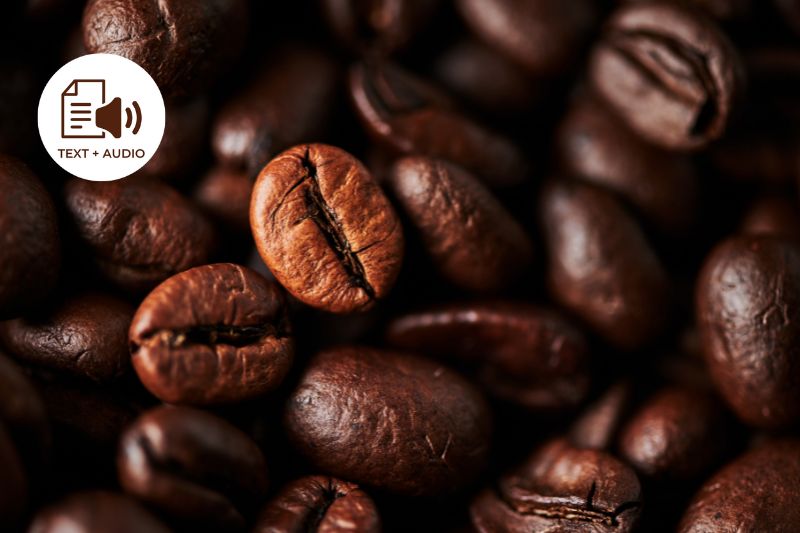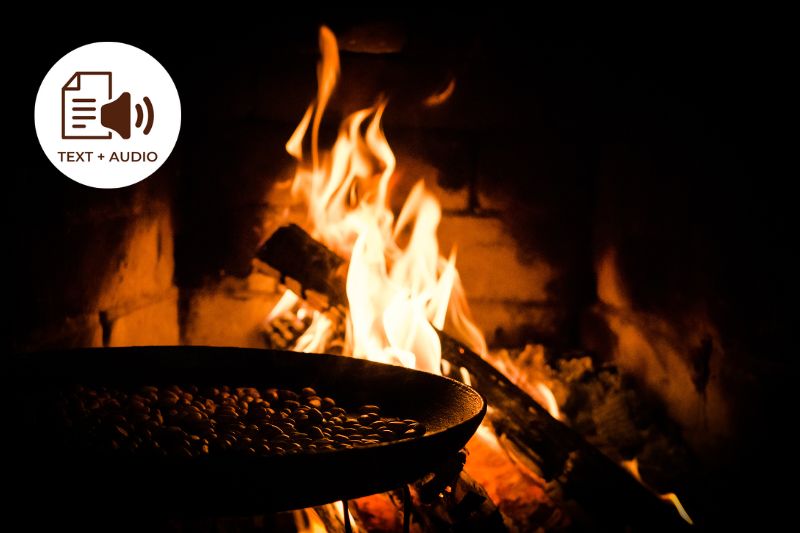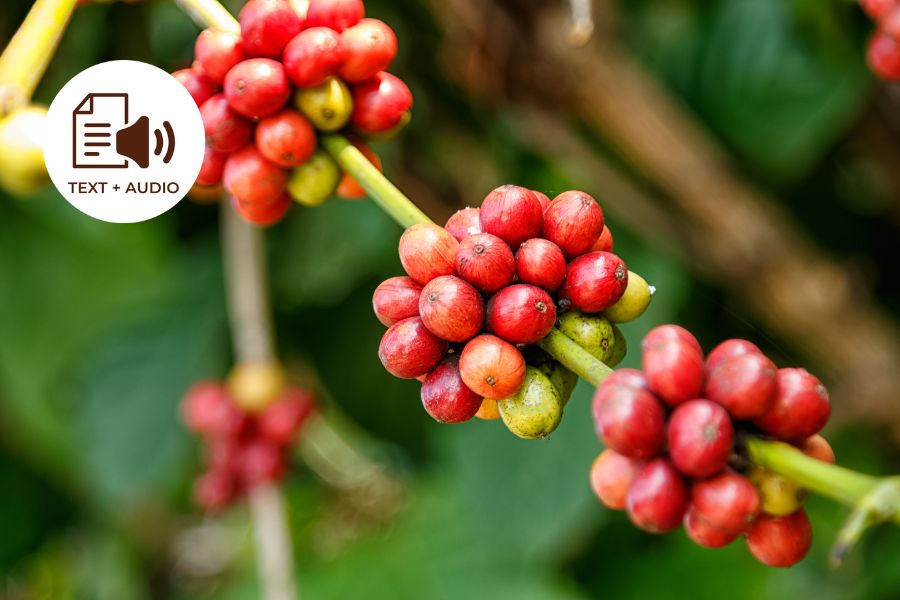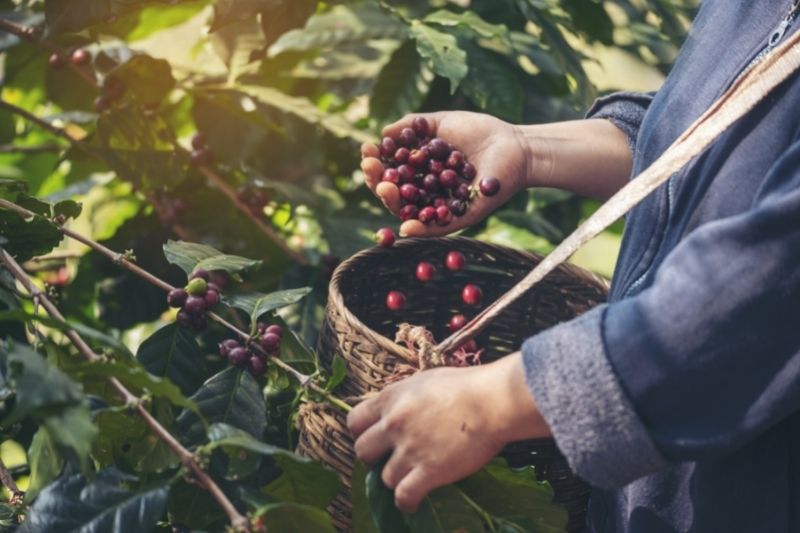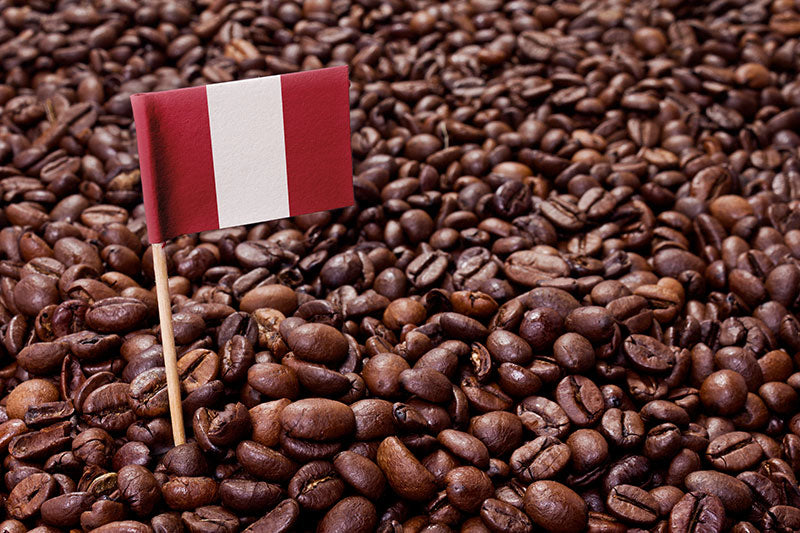With so many types of coffee beans in the world today, it might seem intimidating to start knowing about different types of coffee beans, but it does not have to be so complicated. We can start simply with the fact that coffee beans can be largely divided into two main varieties: Robusta and Arabica.
The origins of coffee plants can be traced back to the African continent and the island of Madagascar. The coffee variety that is cultivated in Colombia is the Arabica variety, which is known for and often regarded as being superior to Robusta for its sweet aroma and smooth, mellow taste.

In recent years, different varieties that are resistant to plant diseases and climate changes have been developed from the original Arabica species to improve production and bean quality. For example, Castillo is a variety of Arabica that is highly resistant to coffee rust, a fungal coffee disease that is devastating to vulnerable coffee plantations. This variety was developed through selective breeding techniques at Cenicafé (Colombia’s National Center for Coffee Research), which is in turn operated by FNC (National Coffee Growers Foundation). This variety combines the two highly desirable characteristics of a coffee variety: abundant production and excellent cup quality.
The first Arabica variety that arrived in Colombia and was subsequently cultivated was Typica, then it was the Bourbon variety; followed by the Maragogipe, which was later replaced by the high-yielding Caturra. In recent years, due to its high resistance to Coffee Leaf Rust disease, the recently developed Castillo variety has become very popular and is cultivated across many regions of Colombia.

We have mentioned earlier that the two most important types of coffee are Arabica and Robusta. Then why are we only discussing Arabica variety when it comes to Colombia? You might have guessed it right – Colombia is one of the few countries in the world that produces only Arabica coffee varieties, which explains why Colombian coffees are among the best in the world. One of the indisputable reasons why Arabica has been the traditionally cultivated variety in Colombia is because Colombia is an ideal location to grow Arabica coffee both in terms of its geography and climate. The Andean mountain range that extends from North to South of Colombia, has an altitude of 1200m to 2300m, and a temperature that ranges from 18°C to 24°C. Not only the high altitude and the optimum temperatures, but also the perfect amount of rainfall, the richness of the volcanic soil, and the naturally present biodiversity in these regions of Colombia provides a condition that is just perfect for Arabica cultivation.
Arabica beans are typically grown in countries near the Equator, such as Indonesia, Eastern Africa, America, and especially the African continent – the place where Arabica coffee was first discovered; what all these places, including Colombia of course, have in common is a constant level of sunlight and a warm climate throughout the year, which are crucial for the cultivation of Arabica coffee.
Now that we are well acquainted with the Arabica coffee production in Colombia, let's dive a little deeper and take a closer look at the seven different sub-varieties of the Arabica family of coffees that are cultivated in Colombia.
Typica
The distinctive features of the Typica coffee trees are that they are conically shaped, have tall trunks and long stems, which make it a variety with a lower yield compared to others. The coffee cherries and the seeds are elongated and narrow. Despite its low yield and susceptibility to diseases, Typica is still grown due to the high quality of beans and the bold, complex flavors that it can bring to the final cup.
Bourbon
The name of this variety might suggest it has something to do with whiskey but in reality, that is not the case. The name comes from the fact that it was originally produced by the French region which was called Bourbon at that time and later introduced by the French to Latin America, including Colombia.
The trees are less conically shaped than Typica trees but they have more secondary branches and the branches are closely spaced from the main stem. These features allow Bourbon to have a yield that is 20-30% higher than Typica. Bourbon coffee cherries are relatively small and dense. Although this variety is known for its sweet cupping profile, it is rarely cultivated in Colombia because of its small size.
Caturra
It is a natural dwarf-mutant of the Bourbon variety and therefore the trees are shorter than that of Bourbon’s. However, Caturra plants have even more secondary branches than the Bourbon plants and the branches are wide-spreading.
This allows more cherries to grow on each branch and not only that, but it also allows a more densely packed plantation style (more trees can be grown on each unit of land). These features give the Caturra variety a higher yield potential.

Maragogipe
Maragogipe is a natural mutant of Typica which is native to Maragogipe, a municipality in Brazil. Maragogipe trees stand taller than that of both Typica and Bourbon and are also characterized by large leaves. Its cherries and beans are the largest among all the coffee species and have earned the name of "elephant coffee beans". Despite the large beans and being appreciated as a rarity in certain coffee markets, the Maragogipe variety has low productivity.
Tabi
The name of this Arabica coffee variety “Tabi” means “Good” in Guambiano (a native Colombian tribe dialect). This name is a well-deserved one, and might as well be an understatement. This cultivar was born by Cenicafé’s (Colombia's National coffee research institute) pursuit of producing a variety that was resistant to coffee diseases but also had a great cup quality and productivity.
Finally, in 2002, the Tabi variety was introduced: a cross between Typica, Bourbon, and Timor hybrid. The genes derived from Timor hybrid give Tabi variety its strong resistance to Coffee Leaf Rust disease, whereas the genes from Typica and Bourbon give it exceptional cup quality. Similar to Typica and Bourbon, the Tabi variety has a tall trunk and long branches.
Colombia
The Colombia variety, also known as Variedad Colombia, has been improved across five generations of breeding cycles and was finally perfected and introduced by Cenicafé in 1983. The crossing process which resulted in the Colombia variety started by hybridizing Coffee Leaf Rust resistant varieties Caturra and Timor hybrid.
Then the offsprings of this cross were self-pollinated with Caturra for four times to result in the Colombia variety which is, like its parent Caturra, highly resistant to Coffee Leaf Rust and has a high yield. As this variety was made before the first outbreak of Coffee Leaf Rust in Colombia, it is sometimes believed to be the variety that saved Colombia's coffee industry.
And finally…Castillo
Born through the hybridization techniques leading up to the Colombia variety, Castillo is a new variety that was developed by Cenicafe over two decades. Castillo is the flag of “Colombia sin Roya" (Colombia without Rust), a program targeted to renew and recover high-quality coffee production in Colombia, which was implemented by FNC (National Federation of Coffee Growers).
It is highly resistant to Coffee Leaf Rust disease (CLR) and Coffee Berry Disease (CBD). Moreover, it is better at adapting to the environment and has a higher yield than both Colombia and Caturra varieties. It boasts of large bean size, and its beans give the final cup a rich taste and deep flavors. Needless to say, Castillo is currently the most cultivated variety in Colombia.
This post was first published in 2021 but it was updated in 2023 just for you.
Get Free Bonus Books

Sign up for free to the Coffee Club to get advice and exclusive articles about how to choose Japanese Coffee, and tips, tricks, and recipes for enjoying Japanese coffee.
About the author
Kei Nishida
Author, CEO Dream of Japan
Certification: PMP, BS in Computer Science
Education: Western Washington University
Kei Nishida is a passionate Japanese tea and coffee connoisseur, writer, and the founder and CEO of Japanese Coffee Co. and Japanese Green Tea Co., both part of Dream of Japan.
His journey began with a mission to introduce the world to the unparalleled quality of Japanese green tea. Through Japanese Green Tea Co., he established the only company that sources premium tea grown in nutrient-rich sugarcane soil—an innovation that led to multiple Global Tea Champion awards.
Building on this success and his passion for Japanese craftsmanship, Kei expanded into the world of coffee, pioneering the launch of Japanese Coffee Co., the first company to bring Sumiyaki charcoal-roasted coffee to a global audience. His dedication to authenticity and quality ensures that this traditional Japanese roasting method, once a well-kept secret, is now enjoyed worldwide.
Beyond tea and coffee, Kei has also introduced Japan’s legendary craftsmanship to the world through Japanese Knife Co., making handmade katana-style knives—crafted by a renowned katana maker—available outside Japan for the first time.
Kei’s journey continues as he seeks out and shares the hidden treasures of Japan, one cup and one blade at a time.
Learn more about Kei




